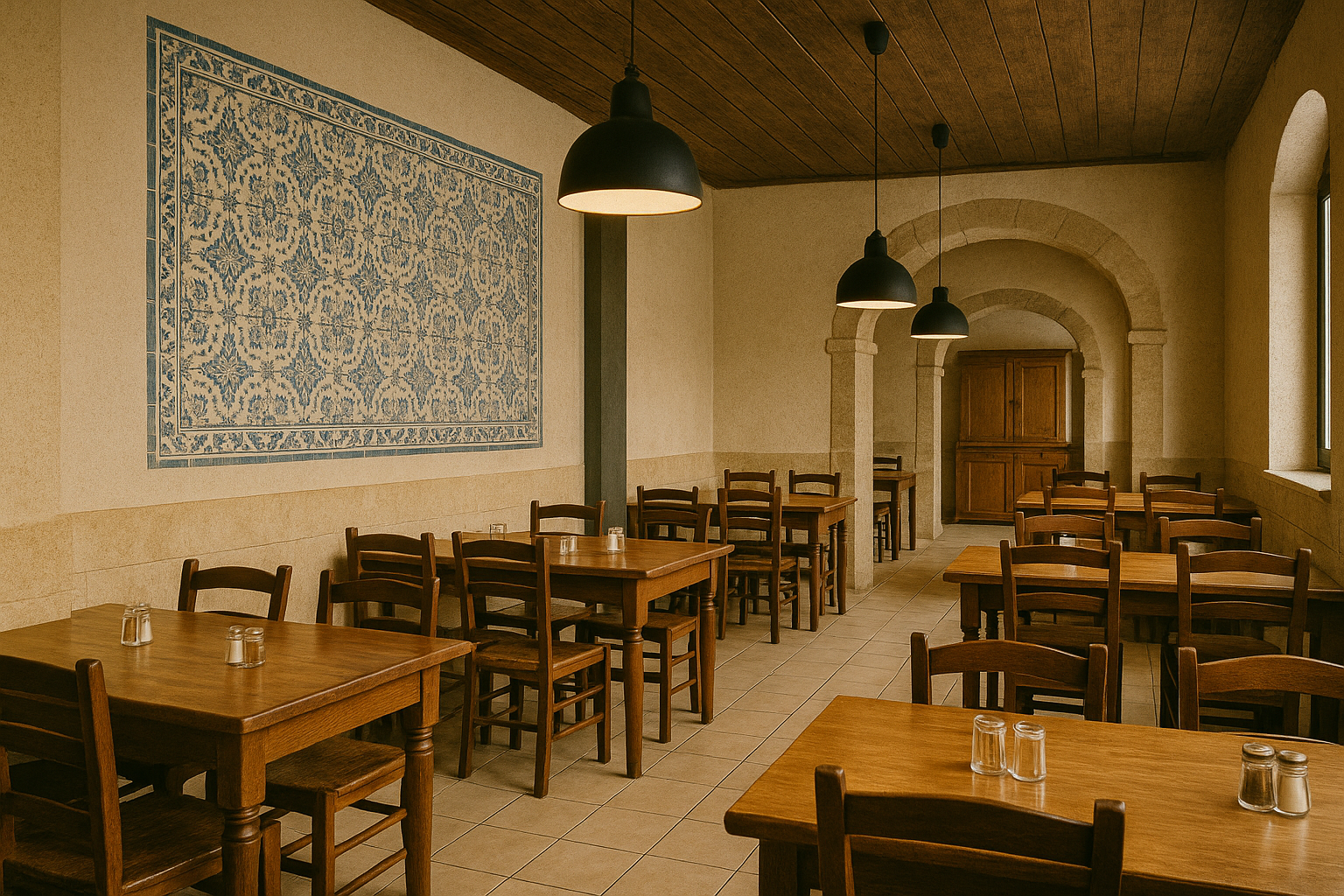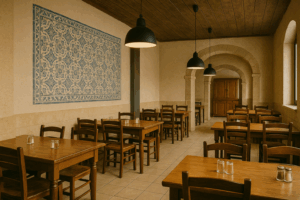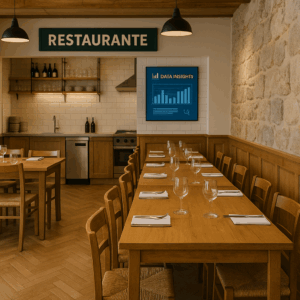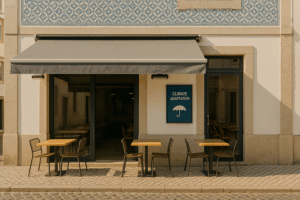Portugal’s restaurant market is one of the most fragmented in Europe, with independent operators dominating the landscape. This report explores the scale and implications of the independent restaurant market in Portugal, drawing from a nationwide analysis of over 3,900 establishments.
Portugal’s restaurant market remains overwhelmingly independent with 88.5% of establishments operating outside chain structures, creating unprecedented consolidation opportunities as only 11.5% of restaurants have achieved chain scale across the country.
Independent Market Share
3,486 of 3,940 establishments remain independent
Independent to Chain Ratio
For every chain restaurant, 7.7 independent establishments exist
Highest Chain Penetration
Food courts lead consolidation with 27 of 64 establishments
The Independent Empire: Europe’s Last Unconsolidated Market
Portugal represents one of Europe’s most fragmented restaurant markets, with independent operators controlling an overwhelming 88.5% market share across 3,940 analyzed establishments. This high level of market fragmentation—where only 454 restaurants operate as chains compared to 3,486 independent establishments—signals both the entrepreneurial spirit of Portuguese food service and the massive consolidation potential awaiting strategic investors.
The scale of independent dominance is remarkable: For every chain restaurant in Portugal, there are 7 independent establishments, creating a market structure that resembles the early stages of restaurant industry development in other European markets before major consolidation waves transformed competitive landscapes.
Chain Penetration Analysis: Where Consolidation Has Begun
Portugal’s chain restaurant development shows dramatic variations across establishment categories, with certain formats achieving significant consolidation while others remain almost entirely independent.
Chain Penetration by Establishment Type
- Food Courts: 42.2% chain penetration (27 of 64 establishments)
- Coffee Shops: 15.6% chain penetration (17 of 109 establishments)
- Kiosks: 15.4% chain penetration (6 of 39 establishments)
- Bakery & Pastry Shops: 11.4% chain penetration (65 of 571 establishments)
- Casual Dining: 11.4% chain penetration (226 of 1,991 establishments)
- Snack Bars: 11.0% chain penetration (65 of 592 establishments)
- Quick Bites: 9.8% chain penetration (16 of 163 establishments)
- Bars: 3.9% chain penetration (8 of 203 establishments)
Food Courts Lead the Chain Revolution
Food courts demonstrate the highest chain penetration at 42.2%, suggesting that controlled environments with managed foot traffic and standardized operations create optimal conditions for chain expansion. This format’s success provides a blueprint for chain development in other categories currently dominated by independent operators.
The Casual Dining Consolidation Opportunity
Casual dining represents Portugal’s largest consolidation opportunity, with 1,991 establishments across the country but only 11.4% chain penetration. This massive market fragmentation—1,765 independent casual dining restaurants versus 226 chain establishments—suggests extraordinary potential for successful concept replication.
Casual Dining Market Dynamics
- Market Size: 1,991 establishments (largest category analyzed)
- Independent Control: 88.6% market share (1,765 restaurants)
- Chain Opportunity: 1,765 potential acquisition or development targets
- Geographic Distribution: Present in all major Portuguese markets
Investment Implications: The Consolidation Wave Opportunity
Portugal’s 88.5% independent restaurant market represents one of Europe’s largest unconsolidated food service opportunities, with market conditions suggesting the beginning of a major consolidation cycle similar to those experienced in more mature European markets.
Market Consolidation Indicators
- Fragmentation Scale: 3,486 independent establishments create massive acquisition opportunities
- Proven Chain Success: 454 existing chain restaurants validate scalability potential
- Category Variation: Different establishment types show varying consolidation readiness
- Geographic Concentration: Emerging chain-friendly markets provide expansion blueprints
International Comparison: Portugal’s Consolidation Lag
Portugal’s 11.5% chain penetration places it significantly behind more consolidated European restaurant markets, where chain penetration typically ranges from 25-40% in mature food service sectors. This suggests Portugal may be entering the early stages of significant market consolidation as economic conditions, consumer preferences, and investment capital align to support chain development.
Regional Opportunity Mapping
Chain development opportunities vary significantly across Portuguese regions:
- Urban Centers: Lisbon and Porto show highest chain acceptance and operational scalability
- Tourism Corridors: Algarve and coastal regions demonstrate strong performance for standardised concepts
- Suburban Markets: Growing middle-class areas present expansion opportunities for family-oriented chains
- Industrial Zones: Business district locations favor quick-service and coffee shop formats
Success Factors for Chain Development
Analysis of successful chain operations in Portugal reveals key success factors:
- Local Adaptation: Successful chains incorporate Portuguese tastes and dining preferences
- Quality Consistency: Standardized operations that maintain local quality expectations
- Strategic Locations: High-traffic areas with established foot traffic patterns
- Price Positioning: Value propositions aligned with local market purchasing power
Investment Timeline and Strategy
For investors considering Portuguese restaurant market entry:
- Immediate Opportunity: Acquisition of successful independent operators for conversion
- Medium-term Development: Ground-up chain development in proven categories
- Long-term Consolidation: Market-wide rollout following successful proof-of-concept
Conclusion: The Great Portuguese Consolidation Opportunity
Portugal’s restaurant industry stands at a consolidation inflection point where 88.5% independent market share creates extraordinary opportunities for strategic market participants. The 3,486 independent establishments represent one of Europe’s largest unconsolidated food service markets, with multiple pathways for value creation through strategic chain development.
For investors, operators, and entrepreneurs, Portugal’s restaurant market presents a rare combination of massive scale (3,940 establishments analysed), minimal consolidation (11.5% chain penetration), and proven viability (successful chain operations across multiple categories).
The question isn’t whether consolidation will occur—market forces and international precedent suggest it’s inevitable. The question is who will position themselves to capture the value creation opportunity before market dynamics shift toward a more consolidated competitive landscape.
For more insights on Portuguese restaurant market trends, explore our analysis of outdoor dining adoption and family dining optimization opportunities.
DIG-IN’s market concentration assessment analysed 3,940 restaurants across 17 location-establishment type combinations, measuring chain vs. independent distribution patterns during July 2025. It shows that Portugal’s restaurant market is one of the most fragmented in Europe, with independent operators dominating the landscape.
For broader context, see how Eurostat’s restaurant industry data compares cross-European chain penetration rates.




